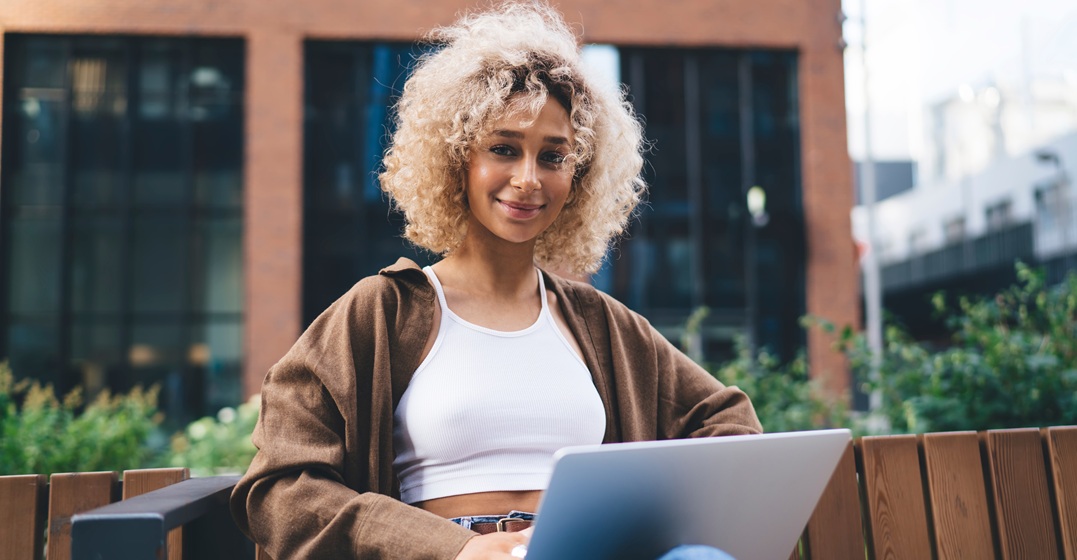by Laura Jones
Updated on January 7, 2025
Knowing your level in Spanish is key to making progress when learning the language. But if you don’t fully understand the letters and numbers that form the language levels (A1, A2…), you’ll never be able to work out where you are currently and where you hope to be. In this article, we’ll explain the Spanish language levels, give you some tips to work out where you are from A1 to C2 and help you discover the best way to learn Spanish.
Language proficiency is often measured by the Common European Framework of Reference for Languages (CEFR). The CEFR is a global scale that can be applied to any language you’re learning, helping you identify your level and understand what skills you should have at each stage. . The scale runs from A1 (beginner) to C2 (proficiency), with four levels in between. The CEFR language levels are used in language education all over the world, including here at Lingoda.



So why does it matter whether you’re at A2 Spanish or B1 Spanish? What’s a little letter or number between friends? Knowing the CEFR Spanish levels and what level you are at helps you choose the right course — if you’re already at Spanish B2, taking a B2 course won’t help you progress. Knowing your level also helps you set goals and know what you might be able to achieve if you move up the CEFR scale. This allows you to measure your progress, giving you small (or big!) wins that can help keep you motivated.

A1-level learners are at the beginning of their journey with Spanish. At this level, you can interact in a basic way, using simple phrases on very familiar topics, such as your family and where you live. Start by learning essential phrases and the most commonly used vocabulary so that you can have practical conversations. Think about what you need to do most often in Spanish (take public transport, ask for directions, and so on) and work from there.
At the A2 level, Spanish learners can complete routine tasks like exchanging personal information, doing shopping, and talking about their past and the environment around them. Make it your goal to focus on learning high-frequency verbs and expressions so that you can engage in dialogues with other Spanish speakers.
The CEFR calls B1-level speakers of Spanish “independent users”. B1 is a fun level as you’re able to deal confidently with most situations that come up while traveling — it’s a great time to book a trip to the Spanish-speaking world. You’re also able to understand the main points of TV and radio shows and texts related to your work. To improve, practice talking about your plans, hopes and dreams.
It’s around the B2 level that you are able to have fairly fluent conversations with native Spanish speakers, though you still hesitate from time to time when searching for unfamiliar expressions. Your reading and listening skills now mean you should be able to understand the main points of fairly complex spoken and written input. To improve at this level, start practicing with longer content for native Spanish speakers, like podcasts, TV shows and articles, and of course, talk with Spanish speakers as much as possible.
A C1 level in Spanish is the goal for many learners! At C1, you’re fluent in Spanish; you can understand nuance and implicit meaning and speak on specialized and unfamiliar topics with very little searching for expressions. At this level, you can improve by engaging in debates or in-depth discussions on a range of topics and focusing on producing extended well-organized speeches or texts.
C2 is considered full bilingual proficiency in Spanish. At this level, you can express yourself precisely and spontaneously in any context and understand any spoken or written input you come across. C2-level learners can improve further by learning idiomatic and colloquial language and by becoming familiar with local dialects and accents in Spanish.
Reaching Spanish fluency levels takes around 1000 hours, while reaching a general level of proficiency takes about 600–750 hours. If you want to learn really fast, consider taking an intensive Spanish course with Lingoda! If you’re progressing through the levels at a normal pace, here’s a table showing some rough estimates of the time it’ll take to move between Spanish levels. There are also some can-do statements for each level that you can use for self-evaluation purposes.
| CEFR Level | Hours (Cumulative) | I can… |
| A1 | 100–150 hours | recognize and use simple, familiar phrases on topics like my family and my immediate surroundings. |
| A2 | 200 hours | understand and use a range of everyday phrases on topics such as shopping, employment and the local areaunderstand short texts and communicate in short social exchanges |
| B1 | 400 hours | understand the main points of speech on most familiar topics, including on TV or the radiodeal with most situations while traveling produce short connected speeches on more abstract topics, like my hopes and dreams |
| B2 | 600 hours | interact with native speakers fairly fluently understand and talk about the main points of concrete and abstract topics, especially in my field of interest watch most TV shows and films and read contemporary books and articles in Spanish |
| C1 | 800 hours | speak and write fluently and almost effortlessly in social, academic and professional situationsunderstand the nuances and implicit meanings of textsspeak in detail on complex topics, organizing my ideas clearly |
| C2 | 1000+ hours | understand almost any spoken or written text with easespeak spontaneously on any topic using idiomatic and colloquial languageuse precise language that is appropriate to the context |
According to the CEFR, there are six levels of Spanish language proficiency: A1, A2, B1, B2, C1 and C2.
It takes approximately 600 hours of study for English speakers to reach a B2 level in Spanish.
Yes, you are considered fluent in Spanish if you reach a C1 level.
A C2 level of Spanish is considered bilingual.
So, how long does it take to learn Spanish? To reach a B1 level and be able to travel confidently, it takes around 400 hours; to reach a C1 level and feel fluent, you’ll need to study for around 800 hours. No matter what your goal is, Lingoda can help you get there. You’ll start speaking from day one thanks to our small-group classes, and you’ll focus on learning real-life language — the sort you’ll actually hear in the Spanish-speaking world. You’ll feel confident to tackle whatever you need to in Spanish.



